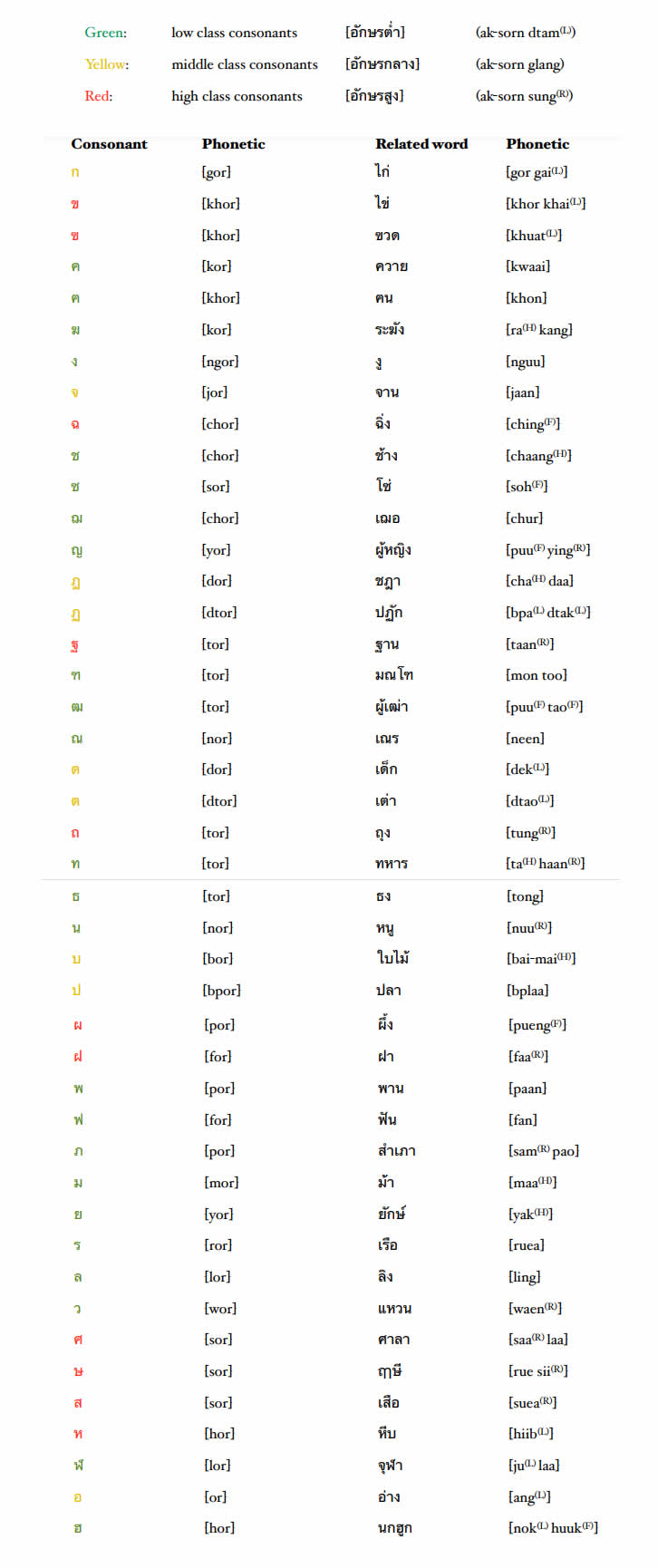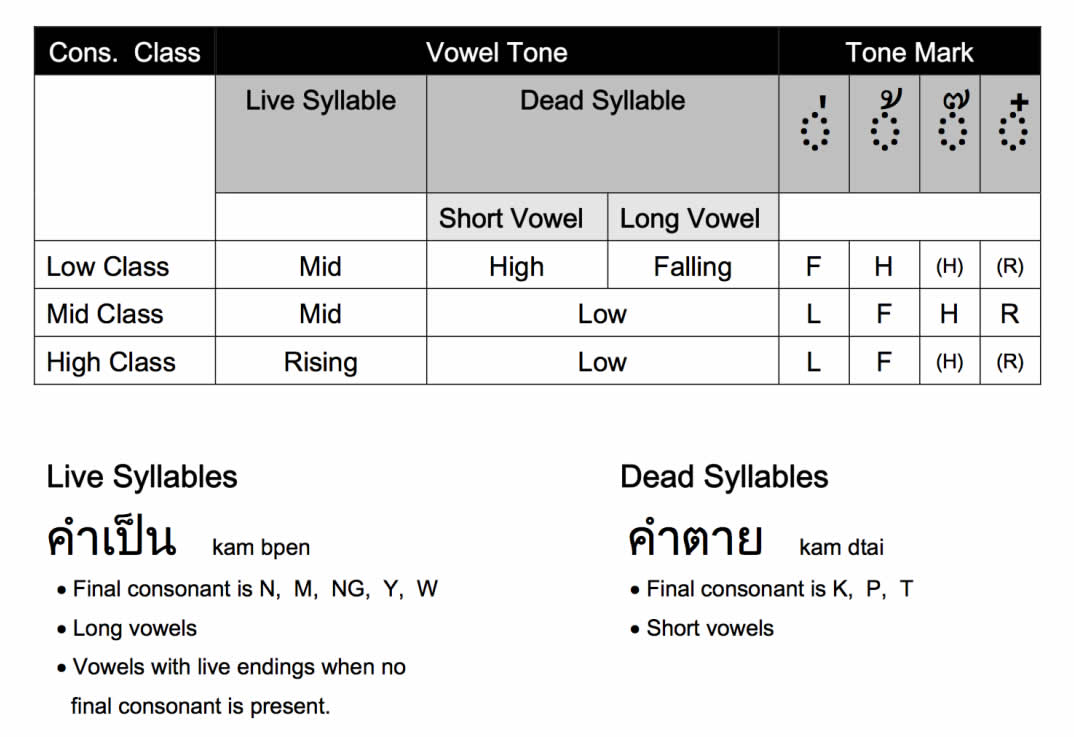Difference between revisions of "Language/Thai/Pronunciation/LOW,-MIDDLE-AND-HIGH-CLASS-CONSONANTS"
| Line 51: | Line 51: | ||
Please see the following sheet: | Please see the following sheet: | ||
[[File:Thai-Language-Vowel-Tone-PolyglotClub.jpg]] | |||
Let me give you an example: | Let me give you an example: | ||
Revision as of 16:01, 3 October 2021
You need to know what class the respective consonant fits in, in order to know how to pronounce the words correctly. There are 5 tones in the Thai language, but only 4 are marked, and they got the following signs (the mark on top of อ consonant):
| อ | ไมเอก | [mai ek] | low tone |
| อ | ไมโท | [maito] | falling tone |
| อ | ไมตร | [mai dtrii] | high tone |
| อ | ไมจตวา | [mai jat dtawaa] | rising tone |
There are specific rules on which tones you can place above the different consonants. This can cause great frustration, so let me give you a few tips on how to learn the system:
- Any of the four tone marks can be put on-top middle class consonants.
- Only อ [mai ek] and อ [maito] can be on top low class consonants.
- Only อ [mai ek] and อ [maito] can be on top high class consonants.
These three steps should be easy. Now, here comes the tricky part:
- When อ [mai ek] is put on-top low class consonants it will make a อ [mai to] sound, e.g. ไม [mai] meaning “no”. ม [mor maa] is a low class consonant, but with a อ [mai ek] on top, a falling tone อ [maito] comes out.
- When อ [mai to] is put on-top low class consonants it will make a อ [mai dtrii] sound, e.g. มา [maa] meaning “horse”. ม [mor maa] is a low class consonant, but with a อ [maito] on top, a high tone อ [mai dtrii] comes out.
- When อ [mai ek] and อ [mai to] are put on-top high class consonants it makes the sound that it is supposed to make. A high class consonant with no tone symbol will by nature make a อ [jat dtawaa] sound, e.g. เสอ [suea] (tiger).
- When either four of the tones are put on-top middle class consonants it makes the sound that it is supposed to make. With nothing on top, the tone is a middle tone.
- When referring to these sounds, they are called: เสยง [siang] (sound) and then followed by either เอก [ek] โท [to] ตร [dtrii] or วตวา [jat dtawaa], e.g. เสยงเอก [siang -ek].
- NOTE: there are different other rules that mix up the rules I just stated above, it’s called คเปนคตาย [kam bpen kam dtaai] (live or death syllable).
Please see the following sheet:
Let me give you an example:
ชาต [chaat] (nationality) is ending with a T sound. Then we know that it is a dead syllable. Then we can see from the sheet, that with a short vowel it will be a high tone, but with a long vowel it will be falling. The vowel า is a long A sound which makes the pronunciation sound of ชาต [chaat] falling. Get the picture? ชาต [chaat] starts with a low class consonant and have no tone mark, then it should be a middle tone, but due to it being a dead syllable the tone changes. Don’t pay too much attention to this for a start, soon you will remember the sound of the word, and this sheet won’t be to much use. And for the record, you will have problems with เสยงตร [siang(R) dtrii] for sure.
For these exotic rules we can only thank the founders of the Thai language.


